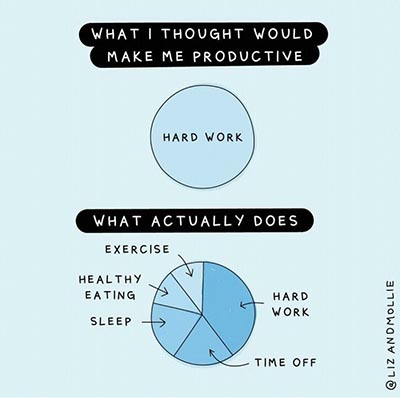Dean's Community Message
November 20, 2020
Dear College of Engineering Community,
On June 14, the University announced its Back to State plans for the fall semester. Since that announcement, today’s date has been circled on the calendar and the topic of hours of planning, conversation, and speculation across the Penn State community and beyond. Finally, we have arrived at November 20, and the planned start of remote teaching and learning that will come after Thanksgiving. Getting here was never a foregone conclusion, and while the fall semester — much like the summer and spring semesters before — has not been “normal” or easy, the fact that we’ve arrived at this date as we have is a testament to all of you, your ingenuity, your resilience, and your care.
As we look to the week ahead and the holiday to come, my sincere hope is that all of you take some time to rest and a rejuvenate for the upcoming end of the semester. Unquestionably, you have earned it! This illustration, in lieu of a quote today, perfectly captures my personal view of what it takes to be productive in our lives. It’s not just about hard work. May your time off, sleep, and other non-work pie pieces — and maybe your real pie pieces, too — expand in size next week.

Here are today’s updates:
Important Resources Available
The holidays are often a stressful time, made more so this year because of the pandemic and limitations to in-person celebrations. If you are struggling, there are a variety of University and community resources available, including:
- Employee Assistance Program (a full description of the free services offered can be found at the link)
866-799-2728 - Centre Crisis Resources Center
1-800-643-5432 (available 24/7) - CentreSafe (formerly the Centre County Women’s Resource Center for domestic violence)
814-234-5050 - Red Folder PSU (contains resources to aid in the recognition, response, and referral of distressed students)
ICYMI: “How to Be an Antiracist” Video Discussion Available
Dr. Ibram X. Kendi’s discussion on his book, “How to Be an Antiracist,” is now available to view at watch.psu.edu/kendi. The virtual event with Kendi was on Nov. 18 and was co-sponsored by the College of Engineering. I highly recommend making time to view the hour-long video!
Teaching Tip #59 - Benefits of wait time
When teachers ask questions of students, they typically wait one second or less for the students to start a reply. Also, when a student does reply, after the student stops speaking, again the instructor moves on in less than one second. Research shows that if teachers increase the pauses at both points to three seconds or more, there are pronounced improvements in student use of language and logic as well as in student and teacher attitudes and expectations.
Take care!
Justin Schwartz
Harold and Inge Marcus Dean, College of Engineering
Updates on this page:
- Important Resources Available
- ICYMI: “How to Be an Antiracist” Video Discussion Available
- Teaching Tip #59 - Benefits of wait time

